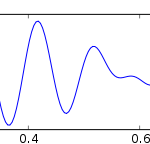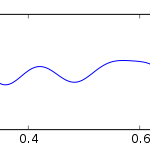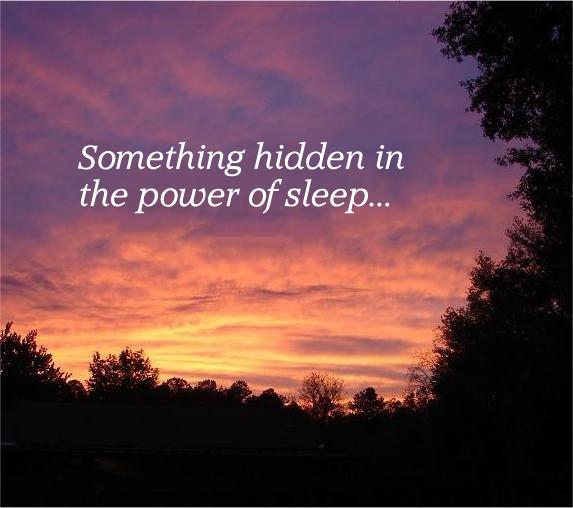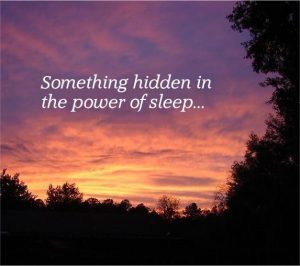I was listening a few days ago to Arianna Huffington promoting her new book on the benefits of sleep, and realized it has gone mainstream. As someone who works with sleep to develop motivation, the current podcast I hope will remove some of the mystery surrounding sleep, explain how it is a form of visualization that follows you when you are wide awake, and then show how you can use it boost performance.
Most of us take sleep for granted because it is something that we have done all our lives and generally think of it as a bucket we fill and draw from and that is that. Taking it to the extreme, there are some of you who view the lack of sleep almost as a badge of honor and will proudly tell others the number of hours you have been able to ride the tiger to keep working without it. What many, including companies, fail to realize is how much more productive you could be if you built in time to use the power of sleep.
Brain waves and sleep
Rather than being one thing sleep is a series of steps in a cycle that works best when it completes. The steps are guided  by your brain’s use of brain waves (yes those lines you would see on an EEG scan) that move from short quick lines which is when you are alert, to slow long waves that is deep sleep. Your first indication of the movement to sleep is when those waves begin to slow. You experience this as feeling drowsy. A situation you are probably know well is sitting in a meeting and slowly feeling your eyes closing and then jerking yourself back to attention. What is happening is that something has triggered your brain to begin to slow down. You are aware of the things around you but can feel your focus drifting away from the activity. This is called the alpha state and is the beginning stage of sleep.
by your brain’s use of brain waves (yes those lines you would see on an EEG scan) that move from short quick lines which is when you are alert, to slow long waves that is deep sleep. Your first indication of the movement to sleep is when those waves begin to slow. You experience this as feeling drowsy. A situation you are probably know well is sitting in a meeting and slowly feeling your eyes closing and then jerking yourself back to attention. What is happening is that something has triggered your brain to begin to slow down. You are aware of the things around you but can feel your focus drifting away from the activity. This is called the alpha state and is the beginning stage of sleep.
The daydream entryway
If you allowed yourself to continue, your brain activity would slow further with longer waves which feels almost  like daydreaming and sets the stage just before going into deep sleep. During this short daydreaming stage you call up images, sort through things you have encountered during the day, change thoughts and make connections to become more creative. This stage is why the suggestion to “sleep on it” works because this is where you put together what needs to be worked on and why.
like daydreaming and sets the stage just before going into deep sleep. During this short daydreaming stage you call up images, sort through things you have encountered during the day, change thoughts and make connections to become more creative. This stage is why the suggestion to “sleep on it” works because this is where you put together what needs to be worked on and why.
Deep sleep is not relaxation
You probably think of deep sleep as relaxation when it is anything but. This final sleep stage, known as delta sleep, is where all the action takes place. Your muscle activity slows down which allows your body to repair itself but research also shows that your brain becomes more active as it makes connections to different parts of the brain that store information or memories based very often on the focus of the daydreaming stage. If this process is skipped by not getting enough sleep your brain operates very much like pouring water into a glass where information is put in to the point it begins to flow over the rim and is lost. This explains why one of the first signs of being sleep deprived is memory loss.
Using sleep to your advantage
You now have a clear idea that the act of sleep is complex and key to your physical and mental health. But what do you think would happen if you were able to focus that daydream like sleep period, which is the prime area for idea formation? Once you have focused a thought in that day dream state and then go into deep sleep, your brain begins to make active connections in several areas so a thought becomes more deeply rooted.
I use this approach in a number of my audio series where your goals are gently encouraged in an extended version of daydream sleep followed by deep sleep where your brain can firmly set an idea. This approach was documented with a Stanford University basketball team that was studied for several months. Players increased their speed by 5%, free throws were 9% more accurate, and their reflexes became faster. Different types of athletes reported similar results.
So how can you achieve these improved results? The simplest things you can do is get more restful sleep, with heavy emphasis on the restful part, because the process needs to complete and waking up then returning to sleep interrupts this process. Try to establish a pattern for the time you go to bed and despite the difficulty, try to put away all electronics about an hour before bed because they have been shown to interrupt sleep. Then just before going to sleep make a point of reviewing in detail the idea or goal that you have set for yourself. Doing this as your last waking act increases the chances that as you enter the daydream sleep state your brain will focus on this idea and carry it over into the deep sleep phase. Be sure your review is an “active” desire as the brain is programmed to look for solutions and may have a conflict with “stop doing this”. “I see myself doing…” can be connected to memories that will support it.
What you are going to find is that during your awaking hours all kinds of ideas will come to you that will match up with the goal you’ve set. It will also help you recognize opportunities that line up with that goal. That is the main reason a number of my audio series involve deep sleep to focus your mind to work on a goal. If you want to stack the deck in your favor… sleep is the best time to do it
Be sure to subscribe to the newsletter to get updates available only to subscribers


